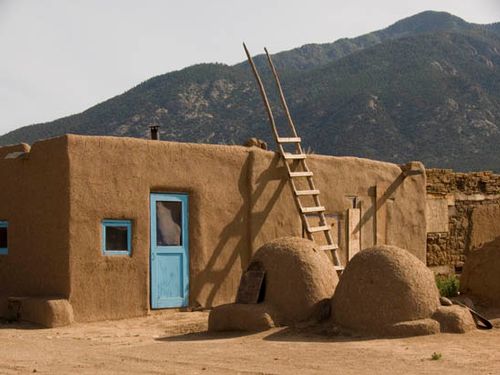Taos Pueblo, New Mexico, USA
History of the Pueblo Indians
The Pueblo Indians are the descendants of the Mogollons and the Anasazi. They are a people living in North East Arizona and North West New Mexico. According to the 2000 census, they were 74,000.
The Pueblo Indians are a very diverse people with many cultural differences from one group to the other. They have 4 distinct language families: hopi, zuñi, keres and tanoan.
Before being in contact with the Spanish, each Pueblo village was politically independent and governed by an assembly composed of the spiritual leaders of the different religious communities. Meetings were held in the kivas. The Spanish colonization introduced a new political organization with a village headman.
The Taos Trail was a branch of the Santa Fe Trail and the town became an important trading center.
Beginning in 1613, the inhabitants of Taos resisted the colonizers and a missionary complained to the Pope if their “rebellious” attitude.
In 1680, all the Pueblo revolted against the Spanish and managed to drive them out for 12 years. The 18th century was a time of wars and Taos played an important role in fighting the Spaniards.
Despite all the changes brought by the Spanish and American colonization, the Pueblo Indians have preserved their social organization and their religion.
The adobe dwellings still remain in their original form and outline but details have changed. The Taos tribe is deeply aware of its heritage and its expression in the buildings of the settlement. Taos Pueblo became, over the years, a seasonal habitat reserved for ceremonies and tourist attractions.




Architecture in Taos Pueblo
Taos Pueblo is a perfect example of the traditional method of adobe construction. The pueblo consists of six ceremonial centers, kivas and two clusters of houses made of sun dried mud bricks with walls up to 70 cm thick. Every year, the walls are refinished with a new coat of adobe plaster during a village ceremony. The roofs are made from cedar logs, their end protruding through the walls. On the logs are mats of branches on which are laid grasses covered with a thick layer of mud and a finishing coat of adobe plaster. It is a massive system of construction but well suited to the rigors of the climate.
The rooms are stepped back from one floor to the other so that the roofs of the lower units form terraces for those above. The units at ground level and some of those above are entered by doors that were originally quite small and low. The upper units are accessed by ladders through holes in the roof. The living quarters are on the top and outside while the rooms deep inside the structure were used as grain storage.
The two main adobe buildings complexes are representative of the natural evolutionary process of the community who has adjusted to a changed social and economic climate and reflects the acculturation of European traits and the relaxing of needs of defensive structures.
In 1970 the people of Taos obtained the restitution of lands usurped by the government including the sacred site of the Blue Lake that had been claimed by the Pueblo Indians for years.
Taos Pueblo’s adobe settlement was designated a World Heritage Site by the UNESCO in 1992.
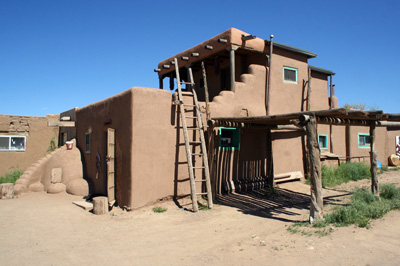
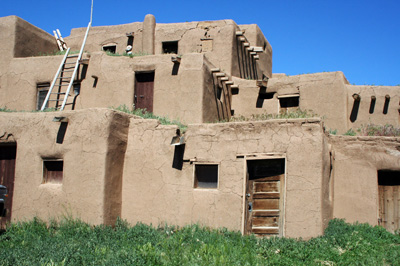
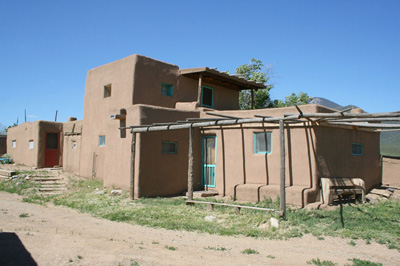
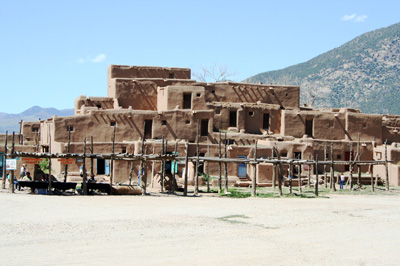


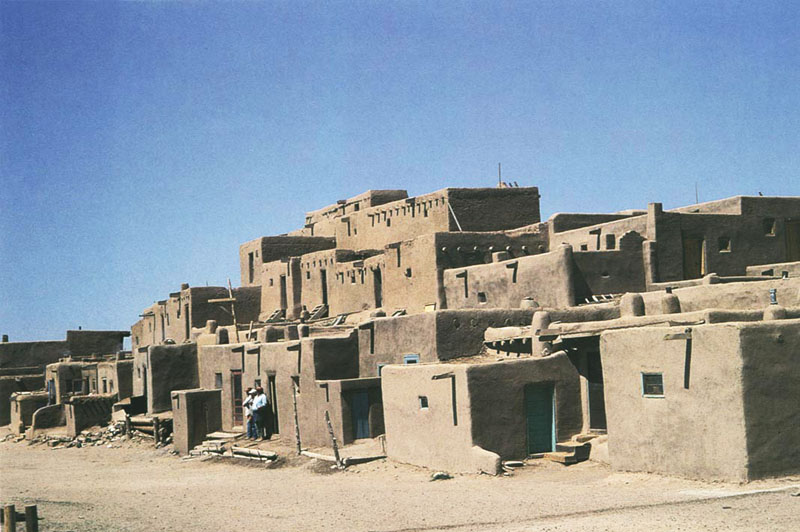
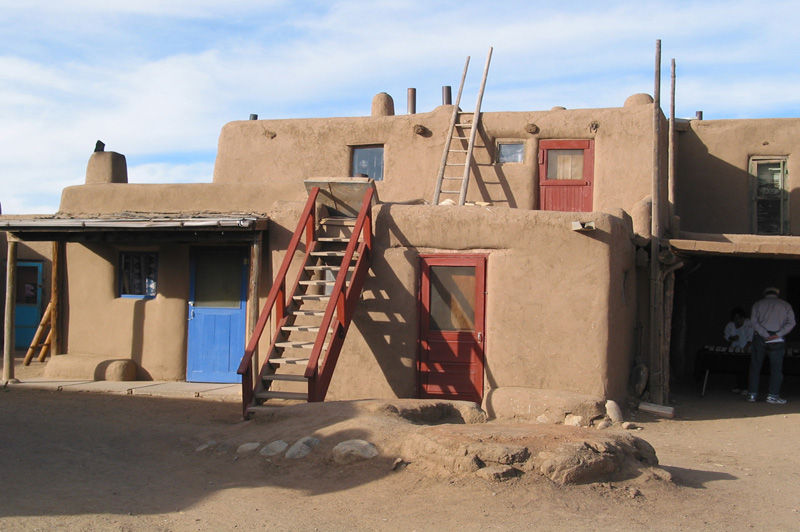
Sources:
- Agnès Lehuen, Pueblo, Encyclopaedia Universalis
- Taos, Encyclopaedia Britannica
- Photos: Introduction: Edmondo Gnerre
Document: Figures 1 to 13 : Joaquin Karcher, Figure 14 : Our Place - http://whc.unesco.org/
Contact US
- Address:Auroville Earth Institute, Auroshilpam, Auroville 605 101 - T.N. India
- Phone:+91 (0) 413 - 262 3330 / 262 3064
- Email:info@earth-auroville.comOpens in your application


